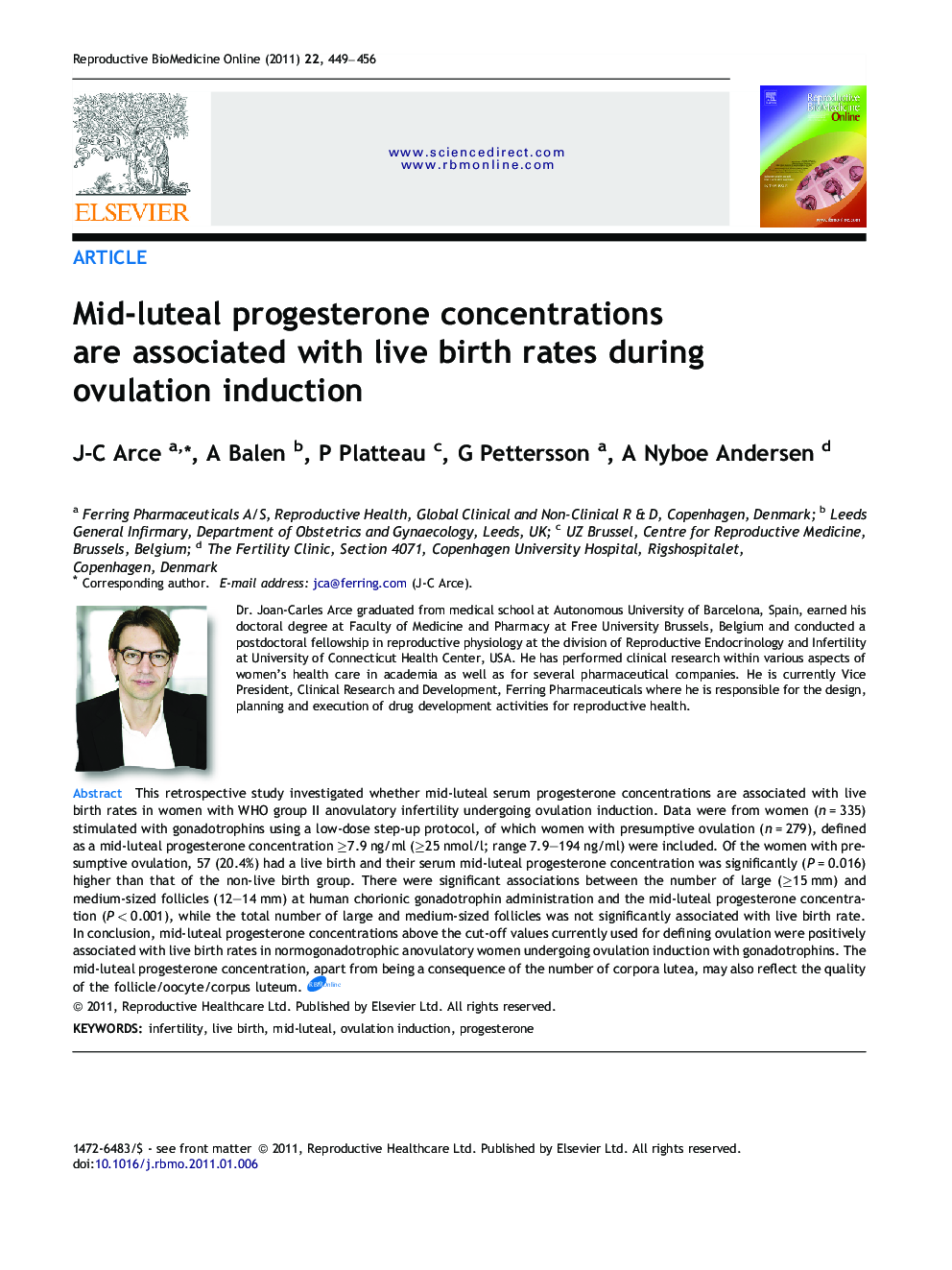| Article ID | Journal | Published Year | Pages | File Type |
|---|---|---|---|---|
| 6189235 | Reproductive BioMedicine Online | 2011 | 8 Pages |
Abstract
Measurement of blood concentration of the steroid hormone progesterone in the mid-postovulatory phase of the menstrual cycle is frequently used to determine ovulation. The aim of this study was to investigate whether increasing blood concentrations of progesterone in the mid-postovulatory phase was associated with higher chances of achieving a live birth in a group of 335 women with anovulatory infertility, who had undergone stimulation with gonadotrophin hormones for the purpose of inducing ovulation. Statistical analysis, performed on the 279 women with presumptive ovulation (defined as a mid-postovulatory progesterone concentration ⩾7.9 ng/ml serum), showed that the mid-postovulatory progesterone concentration was significantly positively associated with live birth rate. There was also a significant association between follicular development at end of gonadotrophin stimulation and the mid-postovulatory progesterone concentration, but follicular development could not explain live birth rate as mid-postovulatory progesterone concentrations could. In conclusion, increased blood concentrations of progesterone in the mid-postovulatory phase of the menstrual cycle above the threshold values currently used for defining ovulation were associated with increased live birth rates in anovulatory women undergoing ovulation induction with gonadotrophin hormones. The mid-postovulatory progesterone concentration, apart from being a consequence of the quantity of follicular development, may therefore also reflect the quality of the ovarian follicles and eggs.
Related Topics
Health Sciences
Medicine and Dentistry
Obstetrics, Gynecology and Women's Health
Authors
J.-C. Arce, A. Balen, P. Platteau, G. Pettersson, A. Nyboe Andersen,
